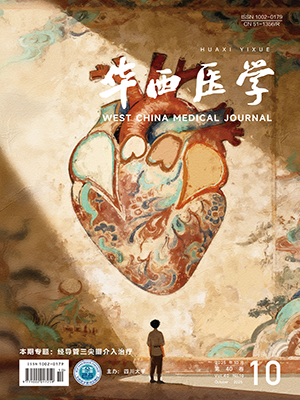| 1. |
Ma XY, Yin QS, Wu ZH, et al. C1 pedicle screws versus C1 lateral mass screws: comparisons of pullout strengths and biomechanical stabilities. Spine (Phila Pa 1976), 2009, 34(4): 371-377.
|
| 2. |
Ma XY, Yin QS, Wu ZH, et al. Anatomic considerations for the pedicle screw placement in the first cervical vertebra. Spine (Phila Pa 1976), 2005, 30(13): 1519-1523.
|
| 3. |
Ma J, Tang J, Wang D, et al. Comparison of perpendicular to the coronal plane versus medial inclination for atlas pedicle screw insertion: an anatomic and radiological study in human cadavers. International Orthopaedics, 2016, 40(1): 141-147.
|
| 4. |
Dawes B, Perchyonok Y, Gonzalvo A. Radiological evaluation of C1 pedicle screw anatomic feasibility. J Clin Neurosci, 2018, 51: 18-21.
|
| 5. |
Kim HB, Lee MK, Lee YS, et al. An Assessment of the medial angle of inserted subaxial cervical pedicle screw during surgery: practical use of preoperative ct scanning and intraoperative X-rays. Neurol Med Chir (Tokyo), 2017, 57(4): 159-165.
|
| 6. |
Tan M, Wang H, Wang Y, et al. Morphometric evaluation of screw fixation in atlas via posterior arch and lateral mass. Spine (Phila Pa 1976), 2003, 28(9): 888-895.
|
| 7. |
Wu C, Deng J, Wang Q, et al. Feasibility of atlas pedicle screw fixation perpendicular to the coronal plane-a 3D anatomic analysis. Global Spine J, 2022, 12(7): 1369-1374.
|
| 8. |
Wu C, Deng J, Zeng B, et al. Three-dimensional anatomic analysis and navigation templates for C1 pedicle screw placement perpendicular to the coronal plane: a retrospective study. Neurol Res, 2021, 43(12): 961-969.
|
| 9. |
Ma C, Zou D, Qi H, et al. A novel surgical planning system using an AI model to optimize planning of pedicle screw trajectories with highest bone mineral density and strongest pull-out force. Neurosurg Focus, 2022, 52(4): E10.
|
| 10. |
Jia S, Weng Y, Wang K, et al. Performance evaluation of an AI-based preoperative planning software application for automatic selection of pedicle screws based on computed tomography images. Front Surg, 2023, 10: 1247527.
|
| 11. |
陈其昕, 沈金明, 李方财, 等. 寰椎侧块置钉安全区域的建立及其应用. 中华创伤杂志, 2006, 22(6): 404-407.
|
| 12. |
陈其昕. 寰椎后弓变异患者寰椎椎弓根螺钉的置钉策略. 中国脊柱脊髓杂志, 2013, 23(5): 426-430.
|
| 13. |
杨利斌. 寰椎椎弓根螺钉进钉通道的选择. 郑州大学学报 (医学版), 2014, 49(2): 287-290.
|
| 14. |
Yang M, Jung JW, Kim J, et al. Current and future of spinal robot surgery. Kor J Spine, 2010, 7(2): 61-65.
|
| 15. |
Lang JE, Mannava S, Floyd AJ, et al. Robotic systems in orthopaedic surgery. J Bone Joint Surg Br, 2011, 93(10): 1296-1299.
|
| 16. |
Davies B. A review of robotics in surgery. Proc Inst Mech Eng H, 2000, 214(1): 129-140.
|
| 17. |
Khan F , Pearle A , Lightcap C , et al. Haptic robot-assisted surgery improves accuracy of wide resection of bone tumors: a pilot study. Clin Orthop Relat Res, 2013, 471(3): 851-859.
|
| 18. |
Zhu Z, Liu E, Su Z, et al. Three-dimensional lumbosacral reconstruction by an artificial intelligence-based automated MR image segmentation for selecting the approach of percutaneous endoscopic lumbar discectomy. Pain Physician, 2024, 27(2): E245-E254.
|




